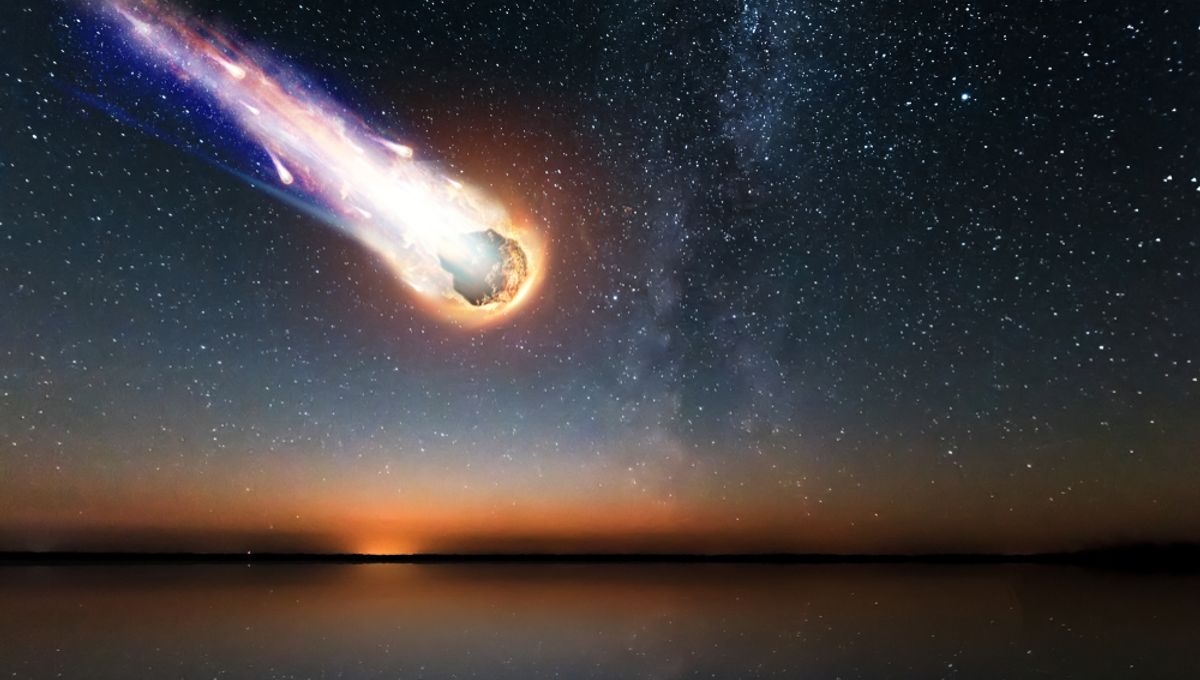
Two years ago, US government sensors detected an exceptionally bright light over the western Pacific. Thankfully, it came from the passage of a large meteorite through the atmosphere, rather than a potential military threat, but it was so powerful astronomers thought it deserved further investigation. On tracing through archival images, a team from the University of Western Ontario have found what appears to be the asteroid’s track 10 minutes before it hit Earth’s atmosphere.
Meteorites are exceptionally important sources of information about the formation of the Solar System. Those that belong to rarer categories are particularly precious to astronomers. Recently, the increasing availability of video cameras has made it possible to sometimes track the path of the incoming object through the atmosphere. From this, it is sometimes possible to calculate the orbit of the object before it fell, establishing the sources of different meteorite types.
After the detection known as CNEOS 20200918, astronomers sought to go one better, figuring anything that made a flash that bright should have been detectable in astronomical photographs. In a paper submitted to the Planetary Science Journal they report their suspicion was right, aided by additional detections from the ATLAS Haleakalā Telescope in Hawaii and the Geostationary Lightning Mapper, an infrared detector carried on a satellite.
Before its encounter with the Earth’s atmosphere, the CNEOS 20200918 asteroid was around 3 meters (10 feet) wide, and weighed an estimated 23 tonnes the authors calculated, although they acknowledge this relies on some assumptions about its density. Ten minutes before it hit the atmosphere, when the image was taken, it was 11,900 kilometers (7,500 miles) from Earth, which believe it or not is quite slow for a space rock. Its orbit was slightly larger than the Earth’s but more elongated, so it crossed our path twice a year. Variation in its brightness indicates it was turning unusually, but not exceptionally, rapidly.
It’s not the first time an object has been photographed both in space and burning up in the atmosphere. However, the previous five cases all involved an asteroid’s orbit being calculated prior to impact so we were on the lookout, most recently in the case of the object that hit off the coast of Iceland in March. That particular event achieved Internet fame when it was described in the highly memeable measurement “half a giraffe”.
The authors, led by Dr David Clark, have made similar efforts to find the asteroids responsible for fireballs (very bright meteors) in archival photographs, but so far without success.
Because the meteorite plunged into the western Pacific, the chances of retrieving any pieces are negligible. The precision with which the orbit has been calculated increases the scientific value of matching it to the composition of any fragments. However, its unlikely to be considered so precious there will be moves to retrieve it from the bottom of the ocean, as is occurring with a 2014 meteorite thought to come from outside the Solar System. It takes a really special space rock to justify that kind of effort.
On the other hand, the authors hope that if we can repeat this success with future bright meteors, one day we’ll manage it with one that lands somewhere more accessible.
A preprint of the paper is available on ArXiv.org.
[H/T: New Scientist]
Source Link: Asteroid That Became A Meteorite Found In Archival Images For First Time